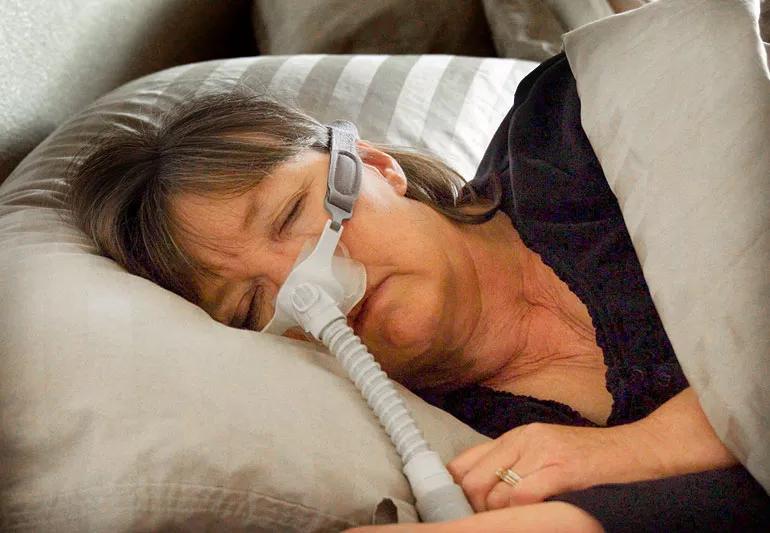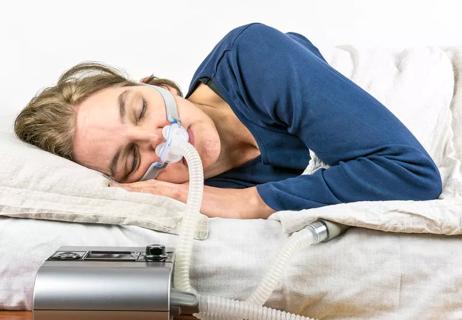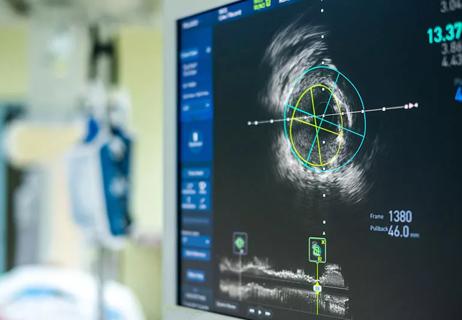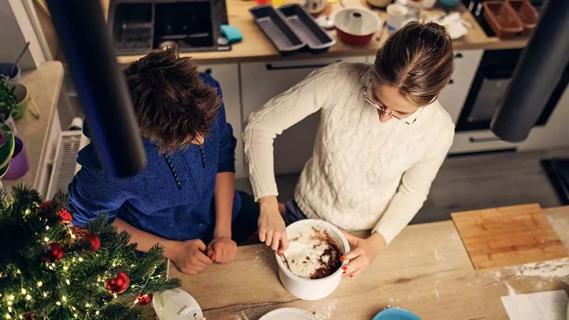It’s OK to take a break while you’re sick, but using your PAP device could help you feel better

If you’re getting treatment for sleep apnea, you know all too well how important it is to breathe safely and effectively throughout the night. The use of positive airway pressure (PAP) therapy makes it possible for you to sleep uninterrupted with the help of CPAP machines, BIPAP machines and adaptive servo-ventilation (ASV) machines.
Advertisement
Cleveland Clinic is a non-profit academic medical center. Advertising on our site helps support our mission. We do not endorse non-Cleveland Clinic products or services. Policy
These tools make sure your body is getting the oxygen it needs all night long — but what happens when you’re sick and congested?
“A CPAP machine puts pressurized air into your nose or your nose and mouth and down into your lungs,” explains otolaryngologist and sleep specialist Alan Kominsky, MD. “If you’re sick, your nose could become congested, you could have a cough, and those things can be irritating to have pressurized air going through.”
Can using a CPAP or other PAP devices complicate illness or make it harder to breathe when you’re all stuffed up? Dr. Kominsky explains what you can do when you’re sick and have a PAP machine, and ways to help decongestion.
When you have a cold, pressure can build up in your sinuses and nasal passages, making it difficult to breath normally. When your sinuses are infected, inflammation can occur in the different airspaces within your face, causing a great deal of discomfort and pressure.
When your airways are functioning normally, a CPAP and other PAP devices pushes pressurized air through those passages pretty easily. But when you’re congested, those passageways become narrower.
“When people have colds, there’s just not enough room to breathe,” says Dr. Kominsky. “So, you just feel a lot of push from the air but it doesn’t have a lot of places to go because of the swelling of the tissues and the narrowing of your airway.”
Advertisement
Using a CPAP machine while you’re sick won’t complicate your illness or make you sicker, so long as you’re cleaning your CPAP and other PAP devices effectively between uses. But if you’re having trouble breathing or dealing with unbearable pressure in your face, wearing a mask and using a PAP device can prove to be uncomfortable or more difficult than you’re used to.
“The question is, can you tolerate it when you’re sick?” asks Dr. Kominsky. “If it makes you cough or if you’re short of breath because you have some deeper lung component to your infection and it’s harder to use, you may have to take a break.”
Some other examples of when you may want to take a break from using your CPAP and other PAP devices include:
Believe it or not, it’s possible that your PAP device can help you feel better when you’re sick.
“Sometimes, when you’re congested, just putting the CPAP on and having that pressure from the air can sometimes cause decongestion if your illness is on the milder side,” says Dr. Kominsky.
While wearing your mask, try repositioning your body so that you elevate your head higher than your heart by propping yourself up on two pillows.
“This will allow the fluids and blood to drain from the structures of your nose and get some natural decongestion,” explains Dr. Kominsky.
Studies have also shown that increasing the temperature of your CPAP’s humidifier and using heated tubing can provide relief for nose and throat symptoms. Modern PAP devices have a built-in humidifier and the ability to increase humidity and temperature.
Either way you shake it, caring for your congestion should be your main focus. There are several solutions you can do at home, including:
These can all help decongest the tissues lining your airways so you can continue using your PAP machine. If you choose the route of a nasal decongestant, you don’t want to use one for more than three to four days, as it could have the opposite affect and cause rebound congestion.
In some cases, you may also be able to take oral decongestants like phenylephrine (Sudafed PE®) but the downside of that is it could keep you up late at night.
“The tips for breathing with a cold are the same whether or not you have a PAP device,” says Dr. Kominsky. “While the idea is that you want to try to never take a break from using a PAP machine, if you can’t tolerate it because you’re sick, it’s OK to take breaks until you take care of your congestion.”
Advertisement
Learn more about our editorial process.
Advertisement

Find out how you can keep yourself and those around you safe

Most recommended precautions center around minimizing bruising or swelling

Even one drink can have an impact on your cognitive function leading to slurred speech, blurred vision and impaired memory

Understand who may (and may not) benefit

Lorem ipsum dolor sit amet. Et odio Quis vel ipsam omnis eum alias deleniti et placeat impedit non voluptas galisum hic autem enim et cupiditate aliquid. Est beatae quidem non facilis autem ut commodi nisi aut tempore rerum et dolores voluptatem cum enim optio id sapiente quasi. Ad laboriosam officiis 33 cupiditate sequi ea voluptatum consectetur qui necessitatibus voluptate et quasi doloremque et facere explicabo quo explicabo officia

Seeking help through therapy can be an important step in improving your quality of life when you have UC

Type 2 diabetes isn’t inevitable with these dietary changes

Applying a hot or cold compress can help with pain